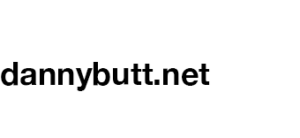Luke Willis Thompson – 5th Auckland Triennial
While sometimes situations organize into world-shifting events or threaten the present with their devastating latency, mostly they do not. — Lauren Berlant [1]
Luke Willis Thompson’s sites of enquiry fit Lauren Berlant’s description of the ‘situation tragedy’: scenes where fragile subjectivities seek ‘the becoming historical of the affective event and the improvisation of genre amid pervasive uncertainty’[2]. However, the forces of capital push the world’s attention safely into tomorrow’s next tragic episode, preventing us from lingering on our own specific attachments to any particular tragedy too long or too publicly. Respite from the brute grind of duration is only possible if our own best world is found to be potentially inhabitable by others. But the over-determination of history – specifically a European history that cleaved races from one another in advance – leaves residual impasses between us that cannot be overcome solely through our own willed activity. So we await a new conjuncture, where we are slowed up or slowed down enough by specific events to escape capital’s rations of time and open out to the otherness of being.
The epic-yet-generic ‘failure’ of Thompson’s artistic gestures to restitute a whole world for us feels somehow inevitable, as his readymades are objects that shatter any achievable fantasy of community: generic art prints from the funeral home that held the artist’s father lying in state; the family residence that lags uncomfortably in the gentrification of inner-east Auckland; the strange French copy of a blackface sculpture temporarily relieved from its fate of haunting an Epsom antique store; the photograph of a Fijian indentured labourer taken in uncomfortably recent history; or here, the garage doors tagged by a Māori youth stabbed to death by a middle-aged white vigilante. The artist seems to suggest that these impossible objects – literally ‘non-sensical’ – must be made sense of and reflected upon, but the situations these traces belong to appear to us all at once, overwhelming our attempts to sort them out.
Thompson rides a form of aesthetic truth that cannot be grasped as an instructive model, as it simply punctures idealist narrative. His works trace the great apparatuses of institutional power/knowledge that constitute our ways of doing or not doing [3], grasping at the clarity recognition of larger situations brings to our more mundane activities of life. But to know the rules of the world’s game only gives a possibility of playing, not a guarantee of winning, as Pihema Cameron’s fate coldly illustrates [4]. Thompson surfaces but then leaves undone the question of how to practice survival in the wake of the incalculable histories to which we differentially belong.
NOTES:
[1] Lauren Berlant, Cruel Optimism, Duke University Press, Durham, 2011, p 6.
[2] ibid.
[3] Gayatri Chakravorty Spivak, ‘More on Power/Knowledge’, in Outside in the Teaching Machine, Routledge: New York, 1993, p 41.
[4] Gayatri Chakravorty Spivak, ‘Ethics and Politics in Tagore, Coetzee, and Certain Scenes of Teaching’, Diacritics 32, no 3, 2002, pp 17–31.
[This appears as the artist page text for Luke Willis Thompson in the 5th Auckland Triennial catalogue, If you were to live here….. Luke also wrote the Local Time artist page text.]

 Follow
Follow